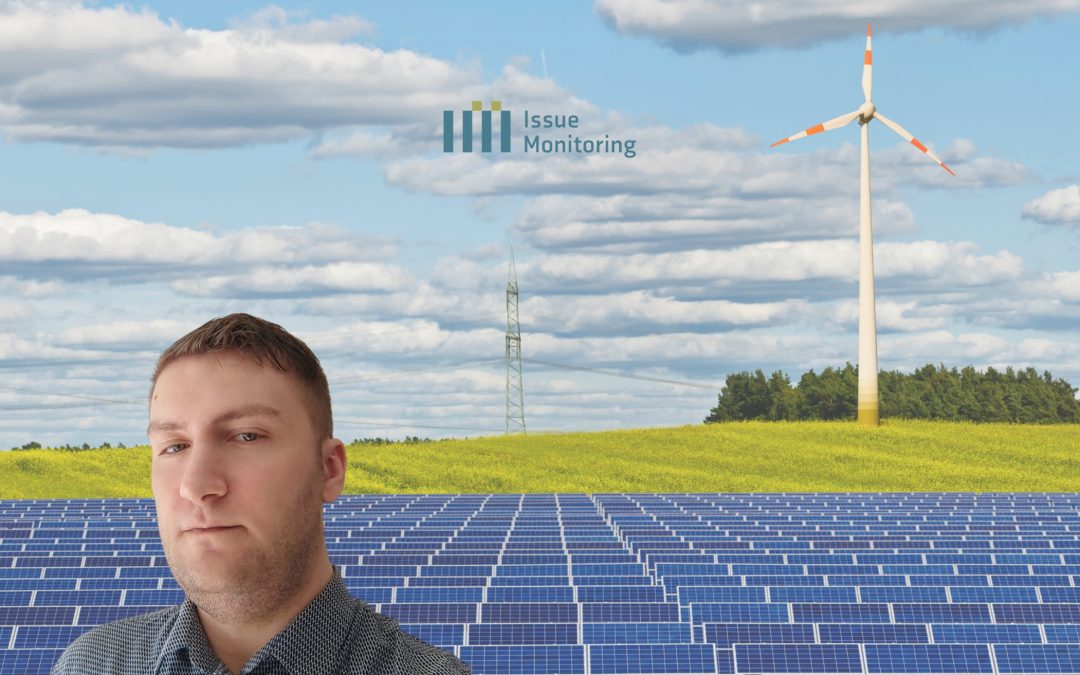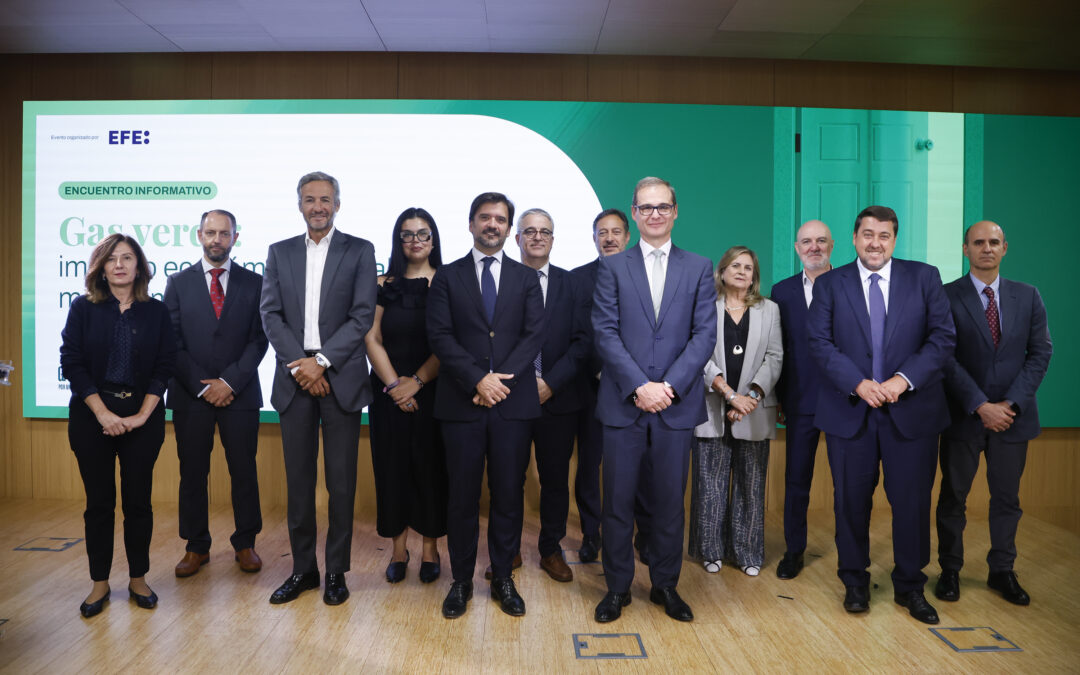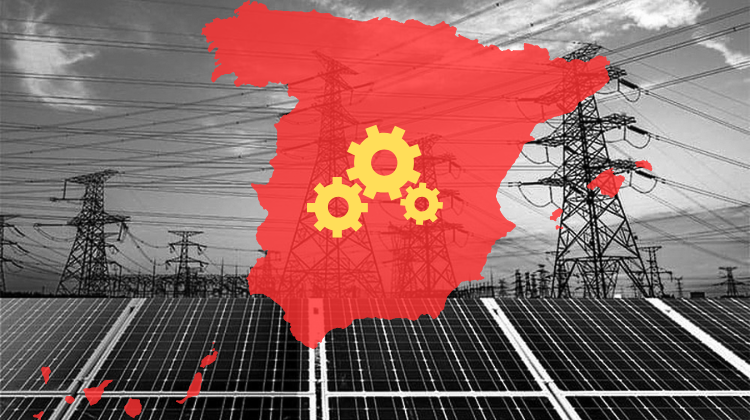The British Government allocates £300 million to the offshore wind supply chain and launches grid connection reforms set to unlock £40 billion annually in private investment, creating thousands of jobs and securing clean energy by 2030.












The British Government allocates £300 million to the offshore wind supply chain and launches grid connection reforms set to unlock £40 billion annually in private investment, creating thousands of jobs and securing clean energy by 2030.

The European Commission approved a €612 million Portuguese plan to reduce electricity rates for electro-intensive companies, preventing their relocation to countries with less stringent climate policies. In return, the beneficiaries must promote energy efficiency measures or use renewable energy. The initiative seeks to balance industrial competitiveness and decarbonization goals.

The suspension of the under-construction Empire Wind 1 project, led by Equinor and featuring components manufactured in Europe, has raised alarm bells. According to consultant Kiko Maza, this development puts the growth of European companies at risk.

At the Summit on the Future of Energy Security, over 120 ministers, CEOs and international leaders agreed that secure, reliable and affordable energy is critical for economic stability, industrial competitiveness and climate resilience. “Without energy security, there is no national security”, asserts UK Prime Minister Keir Starmer.

The consortium formed by Simply Blue Group, Proes Amper, and FF Nev has expressed its readiness to compete in upcoming floating offshore wind auctions. While welcoming the definition of the model and timelines, they remain cautious about potential changes following the 18 May elections.

During the first quarter of 2025, renewable energy sources covered 46.9% of Germany’s total electricity consumption, according to data from ZSW and BDEW. Wind generation fell sharply due to weather conditions, while solar power surged by 32%, highlighting its increasing role in the energy mix.

The second edition of the “Storage, Renewables, and Electric Vehicles Integration Forum,” organized by Mobility Portal Europe and Strategic Energy Europe, will be held virtually on May 21 and 22. Leaders and experts will analyze the challenges and opportunities for accelerating the integration of renewable energy in Europe.

The new TMO4+ framework promises to unlock up to 756 GW of backlogged projects, more than five times the UK’s peak electricity demand, prioritising those that are “ready and needed”. Senior Energy Lawyer Harshita Khurana highlights the legal challenges accompanying this transformation in the UK in an interview with Strategic Energy Europe.

Iberian companies welcome the definition of the auction schedule before July, under a centralised sequential model with a target of 2 GW. What will be the size of the wind farms, what prices can be expected, and how competitive is the market?

The Romanian Government will launch its second CfD auction with an allocation of 3,472 MW and reduced maximum prices. Eusebiu-Valentin Stamate, Policy Analyst at Issue Monitoring, anticipates lower prices, more competition and active participation from domestic and international investors, especially from established markets such as Germany and Denmark.

BloombergNEF forecasts that global electricity demand will increase by 75% by 2050, driven by artificial intelligence and data centres. Renewable energy is expected to supply two-thirds of this consumption, but the report warns of the urgent need to adapt power grids and accelerate system flexibility.

Pedro González, Managing Director, states that enabling multiple physical suppliers will facilitate the signing of long-term contracts in the current context of a slowdown in the PPA market, while also enhancing industrial competitiveness.

The Government defines a sequential centralised model to drive the installation of 2 GW of offshore wind energy by 2030, aligned with the PNEC 2030. The renewables sector highlights regulatory stability and investment appeal.

With the Net Zero Industry Act (NZIA) coming into force, developers fear they won’t be able to meet industrial requirements without higher price caps. “Will politicians accept a higher price cap? It’s not certain, and that creates a lot of uncertainty,” says Matteo Bernard of France renouvelables. Meanwhile, France is seeking to increase its offshore wind capacity 12-fold in just a decade.

Major energy consumers are shifting from industry to data centres. What impact does this have on the renewables market? Carlos Martín Graña, Head of Operations at ENERJOIN, analyzes the current situation.

Germany’s Federal Network Agency confirmed it will uphold the full 3.443-MW volume in the onshore wind tender scheduled for 2 May 2025, despite regulatory provisions allowing for reductions in case of low participation. The maximum bid value will remain at 7.35 euro cents per kilowatt hour.

In March, Ireland’s electricity grid hit a new solar power record, with a peak of 750 MW connected to the system. The figure marks a key milestone towards the country’s 80% renewable electricity target, according to provisional data from EirGrid.

The sector calls on the EU to establish a European Fund for Wind Research & Competitiveness under the next EU budget. The Fund should safeguard the competitiveness of the European wind industry and to secure Europe’s technology sovereignty in clean tech.

The volatility of the European electricity market, intensified by renewable overcapacity and trade tensions between China and the United States, is prompting developers and investors to adopt risk hedging strategies to sustain the profitability of their assets.

In March 2025, 1,556 MW of new PPAs were signed in Europe, a 129% increase over the previous month. Spain, Italy, and Poland led the way in terms of volume, with strong private sector participation and a predominance of solar PV.

Renewable sources covered 39% of electricity demand (in March 2024, they accounted for 42.3%). Photovoltaic (+23.8%) and thermal (+18.6%) sources increased. Hydroelectric (-33.6%), geothermal (-2.4%), and wind (-7.2%) sources decreased. For the latter, this is the third consecutive month of decline.

The British Government allocates £300 million to the offshore wind supply chain and launches grid connection reforms set to unlock £40 billion annually in private investment, creating thousands of jobs and securing clean energy by 2030.

The European Commission approved a €612 million Portuguese plan to reduce electricity rates for electro-intensive companies, preventing their relocation to countries with less stringent climate policies. In return, the beneficiaries must promote energy efficiency measures or use renewable energy. The initiative seeks to balance industrial competitiveness and decarbonization goals.

The suspension of the under-construction Empire Wind 1 project, led by Equinor and featuring components manufactured in Europe, has raised alarm bells. According to consultant Kiko Maza, this development puts the growth of European companies at risk.

At the Summit on the Future of Energy Security, over 120 ministers, CEOs and international leaders agreed that secure, reliable and affordable energy is critical for economic stability, industrial competitiveness and climate resilience. “Without energy security, there is no national security”, asserts UK Prime Minister Keir Starmer.

The consortium formed by Simply Blue Group, Proes Amper, and FF Nev has expressed its readiness to compete in upcoming floating offshore wind auctions. While welcoming the definition of the model and timelines, they remain cautious about potential changes following the 18 May elections.

During the first quarter of 2025, renewable energy sources covered 46.9% of Germany’s total electricity consumption, according to data from ZSW and BDEW. Wind generation fell sharply due to weather conditions, while solar power surged by 32%, highlighting its increasing role in the energy mix.

The second edition of the “Storage, Renewables, and Electric Vehicles Integration Forum,” organized by Mobility Portal Europe and Strategic Energy Europe, will be held virtually on May 21 and 22. Leaders and experts will analyze the challenges and opportunities for accelerating the integration of renewable energy in Europe.

The new TMO4+ framework promises to unlock up to 756 GW of backlogged projects, more than five times the UK’s peak electricity demand, prioritising those that are “ready and needed”. Senior Energy Lawyer Harshita Khurana highlights the legal challenges accompanying this transformation in the UK in an interview with Strategic Energy Europe.

Iberian companies welcome the definition of the auction schedule before July, under a centralised sequential model with a target of 2 GW. What will be the size of the wind farms, what prices can be expected, and how competitive is the market?

The Romanian Government will launch its second CfD auction with an allocation of 3,472 MW and reduced maximum prices. Eusebiu-Valentin Stamate, Policy Analyst at Issue Monitoring, anticipates lower prices, more competition and active participation from domestic and international investors, especially from established markets such as Germany and Denmark.

BloombergNEF forecasts that global electricity demand will increase by 75% by 2050, driven by artificial intelligence and data centres. Renewable energy is expected to supply two-thirds of this consumption, but the report warns of the urgent need to adapt power grids and accelerate system flexibility.

Pedro González, Managing Director, states that enabling multiple physical suppliers will facilitate the signing of long-term contracts in the current context of a slowdown in the PPA market, while also enhancing industrial competitiveness.

The Government defines a sequential centralised model to drive the installation of 2 GW of offshore wind energy by 2030, aligned with the PNEC 2030. The renewables sector highlights regulatory stability and investment appeal.

With the Net Zero Industry Act (NZIA) coming into force, developers fear they won’t be able to meet industrial requirements without higher price caps. “Will politicians accept a higher price cap? It’s not certain, and that creates a lot of uncertainty,” says Matteo Bernard of France renouvelables. Meanwhile, France is seeking to increase its offshore wind capacity 12-fold in just a decade.

Major energy consumers are shifting from industry to data centres. What impact does this have on the renewables market? Carlos Martín Graña, Head of Operations at ENERJOIN, analyzes the current situation.

Germany’s Federal Network Agency confirmed it will uphold the full 3.443-MW volume in the onshore wind tender scheduled for 2 May 2025, despite regulatory provisions allowing for reductions in case of low participation. The maximum bid value will remain at 7.35 euro cents per kilowatt hour.

In March, Ireland’s electricity grid hit a new solar power record, with a peak of 750 MW connected to the system. The figure marks a key milestone towards the country’s 80% renewable electricity target, according to provisional data from EirGrid.

The sector calls on the EU to establish a European Fund for Wind Research & Competitiveness under the next EU budget. The Fund should safeguard the competitiveness of the European wind industry and to secure Europe’s technology sovereignty in clean tech.

The volatility of the European electricity market, intensified by renewable overcapacity and trade tensions between China and the United States, is prompting developers and investors to adopt risk hedging strategies to sustain the profitability of their assets.

In March 2025, 1,556 MW of new PPAs were signed in Europe, a 129% increase over the previous month. Spain, Italy, and Poland led the way in terms of volume, with strong private sector participation and a predominance of solar PV.

Renewable sources covered 39% of electricity demand (in March 2024, they accounted for 42.3%). Photovoltaic (+23.8%) and thermal (+18.6%) sources increased. Hydroelectric (-33.6%), geothermal (-2.4%), and wind (-7.2%) sources decreased. For the latter, this is the third consecutive month of decline.

Select the sector you
want to know more about

MITECO is evaluating measures to ensure the development of green gas. Representatives of Autonomous Communities are committed to simplifying the procedures for ongoing projects. This is an energy that can cover 100% of the thermal demand of Spanish homes before 2040.

El MITECO evalúa medidas para asegurar el desarrollo del gas verde. Representantes de Comunidades Autónomas apuestan por simplificar las tramitaciones de los proyectos en curso. Se trata de una energía que puede cubrir el 100% de la demanda térmica de los hogares españoles antes de 2040.

El Ministerio prepara el borrador para octubre. Las comunidades respaldan el enfoque, pero piden más potencia para industria e hidrógeno, capilaridad territorial y seguridad de suministro; algunas reclaman inversiones adicionales y mayor agilidad.